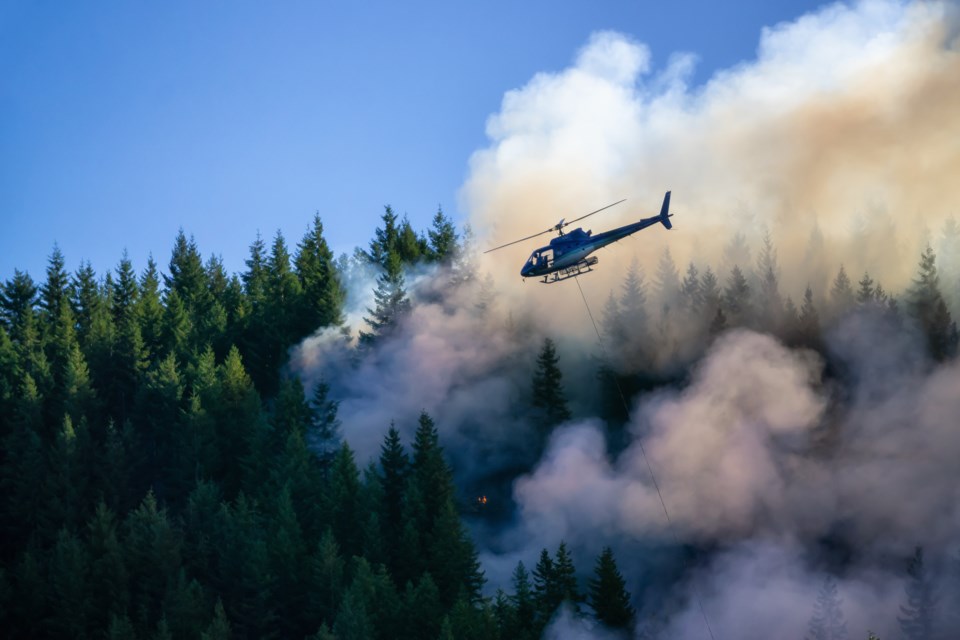As home insurance costs increase due to climate change, mitigation efforts can help residents stabilize their costs.
“We’re seeing more wildfires, floods, and storms driving up insurance costs," said Justine Bowman, branch manager at Westland Insurance Group.
Over the past decade, the cost of claims related to natural disasters in Canada has tripled, reaching over $2 billion annually on average, according to the Insurance Bureau of Canada (IBC).
"This reality pushes communities like Squamish to focus on reducing risks and strengthening defences,” Bowman said in an email to The Squamish Chief.
Why are insurance premiums going up?
“Home insurance premiums have risen due to inflation and more frequent climate-related events like wildfires and floods,” said Bowman.
“These adjustments ensure that providers remain ready to support clients during disasters.”
According to Bowman, the following are some of the reasons for the rising insurance:
- Higher claims from severe weather: Wildfires, floods, and other disasters are happening more often, driving up insurance costs to cover these risks.
- Global risk sharing: Insurance premiums are set to reflect risks worldwide, helping communities like Squamish maintain access to coverage.
- Keeping insurance sustainable: Companies balance their finances to ensure coverage remains available and affordable for most households.
Can insurance help Squamish adapt to climate change?
“While [rising premiums] can be challenging, these premium adjustments help ensure that insurance providers remain prepared to support clients when they need it most.”
Insurance companies set rates based on global risks to stay stable, but local actions to lower risks are also key.
What is Squamish doing to reduce climate risks?
These efforts are visible throughout Squamish, in both government-led initiatives and grassroots community actions.
The District’s climate work includes building bigger dikes, upgrading infrastructure, and investing in wildfire preparedness.
“Flood management is an important aspect of this work,” said Rachel Boguski, media relations specialist for the District of Squamish.
“Since 2017, the Integrated Flood Hazard Management Plan has helped secure over $14 million in grant funding for dike infrastructure construction and upgrades.”
The plan outlines over 100 recommendations, including addressing deficiencies in the dike network, upgrading sea dikes to withstand future sea-level rises, and implementing new hazard policies to guide resilient development.
These initiatives have also been allocated $7.5 million for climate adaptation and $15.6 million for mitigation in the District’s five-year financial plan.
Is FireSmart helping Squamish fight wildfire risks?
According to the government of British Columbia’s Wildfire Service website, during the 2024 wildfire season, 51 evacuation orders were issued, impacting over 4,100 properties, and 112 evacuation alerts affected more than 12,500 properties.
Wildfire mitigation is a key focus of the Squamish-Lillooet Regional District (SLRD), which has been implementing the FireSmart program since 2020.
Funded by the Union of BC Municipalities, FireSmart offers free home assessments, clean-up days, and financial rebates to help homeowners reduce wildfire risks.
“Participation in FireSmart activities has increased by 185% between 2023 and 2024,” said Maude Lussier, wildfire mitigation lead for the SLRD.
“This means more residents are aware of the risks and are taking steps to minimize them, from removing flammable vegetation to retrofitting their homes.
“The real success story is how residents have supported and believed in the program,” added Lussier in an email to The Squamish Chief.
“Every small action, whether it’s raking brush or planting a deciduous hedge instead of cedars, contributes to a more resilient community.”
The District of Squamish also has a FireSmart initiative.
Can FireSmart save you money on insurance?
FireSmart doesn’t just protect homes from wildfires; it could also save you money.
“FireSmart practices significantly lower wildfire risks and may also lead to reduced insurance premiums,” said Lussier.
“Insurers like BCAA and Co-Operators now provide incentives for properties adopting these measures.”
“With the new FireSmart BC Wildfire Mitigation Program launching in 2025, homeowners can increase their fire resilience and save money on their insurance at the same time,” Lussier added.
Still, challenges remain in encouraging proactive participation.
“Helping residents stay focused on actions within their control is often a challenge,” noted Lussier. “We recommend starting early in the season rather than waiting for the first wildfire to appear.”
As climate change drives the intensity and frequency of natural disasters, local leaders emphasize collaboration and forward planning.
“We meet regularly with FireSmart leads and neighbouring Indigenous communities to share successes and challenges,” Lussier said.
“This collective effort is key to staying ahead of climate risks.”
Bhagyashree Chatterjee is The Squamish Chief’s Indigenous affairs reporter. This reporting beat is made possible by the Local Journalism Initiative.



